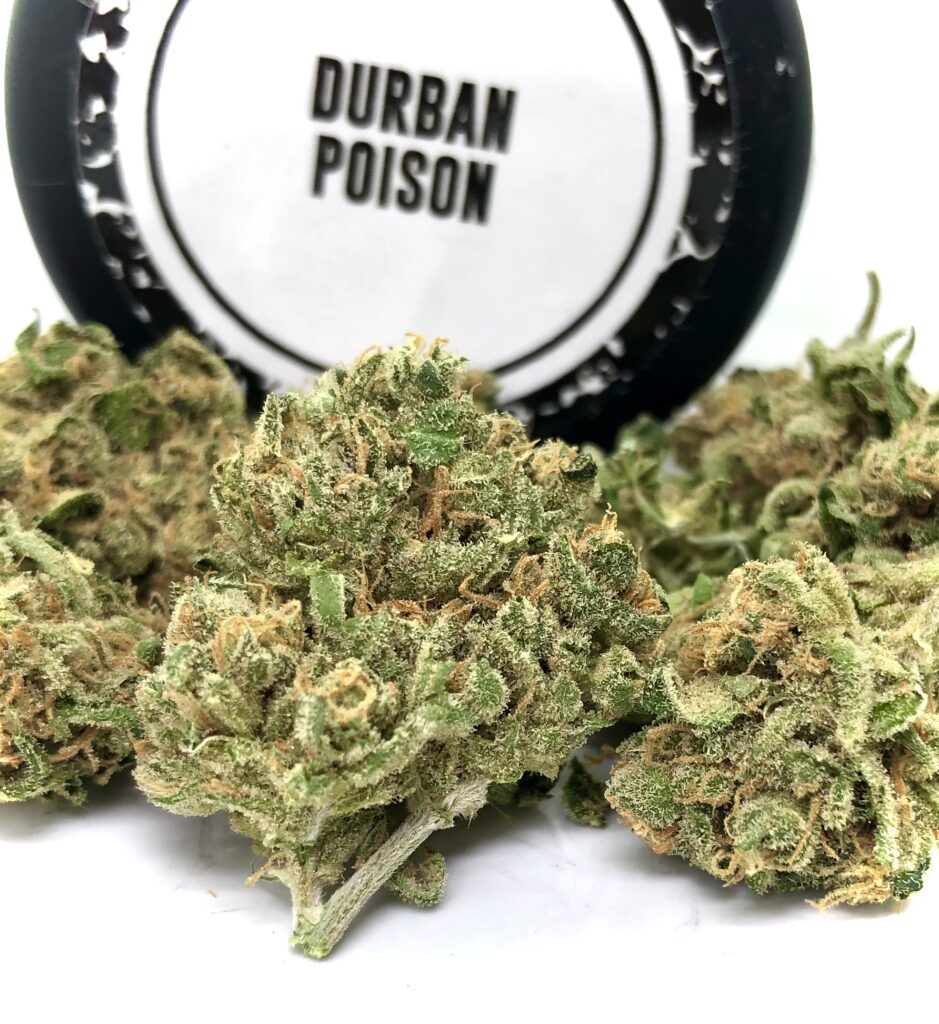A Closer Look Inside
An examination of the terpene and chemical profile of Culta’s Durban Poison BATCH 1 and BATCH 2
Culta’s Durban Poison batch is composed of 2.93% terpenes, with Terpinolene and Ocimene being the most concentrated. BATCH 2 also contains an interesting and rare cannabinoid usually found in equatorial strains, THCV.
THCV
THCV is a lesser-known cannabinoid compared to CBD, but it is commonly found in strains grown south of the equator. Durban Poison, being native to the region south of the equator, is often associated with higher levels of THCV. In BATCH 1, Durban Poison had no THCV, while BATCH 2 exhibited a high concentration of 1.09%. As more research is conducted on THCV, its presence in terpene profiles will become more significant.
Terpinolene
Terpinolene is a terpene that can be found in various trees, such as pine, apple, fir, sage, rosemary, and lilac. While it is considered rare in cannabis, it can be found in some strains like Jack Herer, Orange Cookies, Modified Grapes, and Holy Roller, all of which are grown by Culta.
Terpinolene, when present in high concentrations, can overshadow the effects of other terpenes, much like how ocimene dominates the aroma.
While terpenes like limonene and pinene have more uplifting and energizing effects, terpinolene can induce a spacey or sedative effect, especially in higher doses. Culta’s Durban Poison, with its high levels of terpinolene, can cause somnolence and be used to relieve stress and promote sedation.
Modulating the Effects
The effects of a strain can vary depending on the dosage. Low to medium doses of terpinolene can induce spacey effects and tranquility, while higher doses can result in sedation. Micro or medium doses can amplify the uplifting and focus-enhancing aspects of a strain, while higher doses may produce a sedative effect. The effects of terpinolene and THC, whether sedating or spacey, depend on the dosage and individual tolerance.
Culta’s Durban Poison, with its significant terpinolene content, offers a cerebrally uplifting and functional high when consumed in smaller doses. As the dosage increases, the sedative effects become more prominent.
Personally, I find that micro to medium doses of Durban Poison allow for a harmonious relaxation and elevated tranquility, without inducing sedation or drowsiness. Overconsumption of this strain can lead to disorientation and dizziness.
NOTE: There is currently limited research on the effects of individual terpenes in conjunction with THC, other cannabinoids, and varying terpene ratios. The data is still emerging, and the effects of different terpene concentrations and arrangements on the mind and body are yet to be fully understood.
Durban Poison’s ability to motivate the body, stimulate the mind, and potentially suppress hunger makes it an ideal strain for individuals in harsh environments like Africa. Culta’s version retains most of these effects but with an added potential for sedation.


